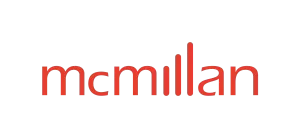- within International Law topic(s)
- with Senior Company Executives, HR and Finance and Tax Executives
- in Canada
- with readers working within the Banking & Credit, Media & Information and Metals & Mining industries
In our previous bulletin, we examined how escalating Canada-US tariff tensions were reshaping supply chains and increasing legal and operational challenges for Canadian businesses. Since then, Canada has moved to recalibrate its trade policies and resulting tariffs.
This bulletin therefore provides the latest overview of Canada's trade landscape, including the Government of Canada's decisions to scale back retaliatory surtaxes on certain non-steel and non-aluminum goods, to broaden the list of goods subject to remission, and to refine its new tariff-rate quotas ("TRQ") for certain steel imports. This bulletin also highlights Canada's ongoing approach to public consultations for the upcoming Canada-United States-Mexico-Agreement ("CUSMA") joint review.
The Government of Canada Scaled Back Retaliatory Surtaxes
As set out in detail in our previous bulletins, Canada had imposed three phases of retaliatory tariffs in response to US tariffs on Canadian goods:
- On March 4th, Canada imposed surtaxes on a wide range of goods such as orange juice, alcohol products, peanut butter, cosmetics, coffee, and apparel, among many others;
- On March 13th, Canada imposed surtaxes on US steel and aluminum, and other goods such as tools, computers and related products, sport equipment, and goods of cast-iron; and
- On April 9th, Canada imposed surtaxes on non-CUSMA complaint US-origin automobiles and certain auto parts.1
On June 25, 2025, the Government of Canada granted various remissions, such that applicable tariffs would not be payable, and previously paid tariffs could be refunded.
In response to industry pleas for relief, and based on ongoing negotiations with the United States towards broader tariff relief, effective September 1, 2025 the Government of Canada removed tariffs on 90% of US goods (leaving tariffs on certain US steel, aluminum, and automobiles).
On that date, the Department of Finance also ceased accepting remission applications on goods for which the surtaxes have been repealed – in other words, importers can no longer apply for remission retroactive to the date the tariffs were imposed if the tariffs did not apply past September 1, 2025.
Many companies had previously filed remission applications with the Department of Finance (i.e., applications for the tariffs to be waived on an exceptional basis), including for goods that are no longer subject to tariffs on a go-forward basis. The Department of Finance will continue to work through the numerous remission applications it previously received. Successful remission will allow for refund of tariffs previously paid.
Tariff Remissions Update
On October 17, 2025, the Department of Finance released amendments to the United States Surtax Order (2025-1), providing for remission on hundreds of goods to mitigate the impact of US surtaxes on Canadian businesses. These remissions were granted on an exceptional basis, and generally only where goods were unavailable to be sourced domestically from Canadian producers. The Schedules to the amended surtax order prescribe three scenarios for the newly listed products:
- Remission for all importers indefinitely from the time the tariffs came into effect;
- Remission for all importers from the time the tariffs entered into effect until a specified date; and
- Remission for specific importers, subject to conditions such as end date and end user, among other factors.2
The government also extended the expiry date for duty remission on goods used as inputs into Canadian manufacturing or processing. Specifically, remission is provided (and surtaxes are not payable) on goods imported for use, in Canada, in the manufacture or processing of any good or in the packaging of a food product or beverage. This widely used exemption was scheduled to expire on October 16, 2025 but it has now been extended for a further two months. In addition, the Government of Canada added an exemption for goods used in the production of any agricultural product.
The McMillan LLP team understands that thousands of individual remission applications submitted by Canadian businesses have yet to be assessed. The Department of Finance continues to work on reviewing such applications and engage with industry to provide remissions only where in the best interests of Canada to do so (and generally where needs cannot be satisfied from Canadian production). In our experience, targeted advocacy can assist in helping worthy remissions move forward expeditiously.
TRQ Administration Overhaul
Effective June 27, 2025, Canada implemented new quarterly tariff-rate quotas on steel mill products imported from non-free trade agreement ("FTA") countries.3 On August 1, 2025, the Government of Canada expanded the scope of the steel TRQs to apply to FTA countries as well, with the exception of the United States and Mexico.4
The TRQ rates apply to 23 different steel mill products categories:
Carbon steel ingots; steel billets and blooms; hot-rolled sheet; floor plate; steel plate; cold-rolled sheet; tin; coated steel sheet; pre-painted; rebar; hot-rolled bar; wire rod; cold finished bars; structural steel; steel wire; stainless steel ingots; stainless steel billets and blooms; line pipe; oil country tubular goods; standard pipe; large diameter line pipe; piling pipe; and hollow structural sections.
The Government of Canada provides live reports tracking TRQ utilization for each product category for both FTA and non-FTA countries.5
TRQs are intended to manage import volumes to stabilize Canadian industries and importers, but in practice, may introduce several challenges. For instance, quota volumes for 2025 are determined based on import volumes reported in 2024 and are distributed evenly across four quarters. This approach may not account for evolving commercial complexities in 2025, potentially leading to a misalignment between quota availability and actual market demand.
To apply for quota, importers must apply for shipment-specific import permits with Global Affairs Canada ("GAC").6 The application may be filed up to 15 days in advance of the expected date of entry for the goods. Issued import permits are valid for a total of 30 days, comprising the 5 days before the estimated date of entry and 24 days after the estimated date of entry.
Applications are administered in the order that GAC receives them. Without a permit obtained in advance of the goods arriving, a 50% tariff is payable, and there is no certainty that permits will be arrival on arrival of a given shipment. Permit applications exceeding the total allocated quota room will not be granted in part, meaning that where an importer brings in goods that exceed the remaining quota, they will undergo assessment by a GAC officer and be subject either to a waitlist or to refiling the application to correspond with the remaining quota amount. Given that any imports exceeding the quarterly quota amount are subject to a steep 50% surtax, importers may wish to strategically avoid claiming large quota amounts on permit applications.
The TRQ mechanism and permit application process has already led to strategic behaviour by importers to maximize quota allocation.
The current quarterly period will expire on December 25, 2025 at 23:59:59 ET. The subsequent quarter will begin on December 26, 2025 at midnight ET, ending March 26, 2026 at 23:59:59 ET. The earliest importers may apply for a permit from GAC for the upcoming quarter beginning on December 26 is December 11, 2025 at midnight ET (understanding that permits applied for on December 11th will have an anticipated entry date of December 26th). The following quarter will begin on March 27, 2026 at midnight, with permit applications opening for that quarter on March 12th at midnight.
Upcoming CUSMA Joint Review – Public Consultations Begin
The Canada-United States-Mexico Agreement ("CUSMA") governs billions of dollars in trade annually across Canada, the US, and Mexico.7 The Government of Canada has launched public consultations running from September 20 to November 3, 2025, in preparation for the CUSMA's first formal joint review in 2026.8
The public consultations offer Canadian businesses, industry associations, and other stakeholders the opportunity to share their views and experiences on areas of CUSMA that are working well, and potential areas of improvement. Stakeholders should also consider priorities in light of recent trade tensions, particularly with the United States.
The upcoming joint review is an interim milestone contemplated under the Agreement to allow the parties to assess CUSMA's current performance, suggest necessary modifications, and decide on term extension beyond the current expiry date of 2036.9 If any party declines the extension, annual reviews will occur until 2036, at which point the agreement will expire unless extended.
Several key issues are expected to be the focus of the upcoming review:
- US tariff tensions, particularly since early 2025, which unilaterally undermine CUSMA's benefits to Canada and Mexico;
- Challenges relating to the US approach to determining regional value content for automotive parts and vehicles under CUSMA's rules of origin;10
- Transshipment concerns relating to Chinese firms using Mexico to access North American markets tariff-free; and
- Ongoing tensions relating to access to Canada's dairy and supply-managed industries.
Interested stakeholders should submit views on CUSMA and the upcoming joint review to CUSMA-Consultations-ACEUM@international.gc.ca.
Next Steps for Businesses
In light of the rapidly evolving trade landscape, Canadian businesses and businesses operating in Canada should ensure they understand their current tariff exposure and risks arising from future escalation of duties.
Participation in the ongoing CUSMA consultations may also help ensure that concerns of Canadian businesses are heard.
Footnotes
1. All Things Tariffs: A Comprehensive Overview of Where We Stand Today, April 17, 2025, online.
2. See Customs Notice 25-19: United States Surtax Remission Order (2025), as updated October 17, 2025. McMillan LLP and various importers have received a copy of the United States Surtax Order (2025-1) as amended October 17, 2025, but understand the amended order is unlikely to be published in final form until mid November.
3. Order Imposing a Surtax on the Importation of Certain Steel Goods, June 26, 2025, online. See also: Department of Finance Canada, Tariff-rate quotas on imports of steel mill products, June 2025.
4. Order Amending the Order Imposing a Surtax on the Importation of Certain Steel Goods, July 30, 2025, online. See also: Customs Notice 25-24: Order Imposing a Surtax on the Importation of Certain Steel Goods, as updated August 1, 2025.
5. Government of Canada, Steel: Tariff rate quota (TRQ) utilization data quarterly reports.
6. Government of Canada, Notice to importers: Item 82 – Steel goods – Serial No. 1142, August 1, 2025.
7. Global Affairs Canada, Canada launches public consultations on the Canada-United States-Mexico Agreement, September 19, 2025.
8. Global Affairs Canada, Share your views: Consulting Canadians on the operation of the Canada-United States-Mexico Agreement (CUSMA), September 2025.
9. Global Affairs Canada, Canada-United States-Mexico Agreement (CUSMA) – Chapter 34: Final Provisions, at 34.7.
10. See McMillan LLP's CUSMA Dispute Settlement Scoreboard.
The foregoing provides only an overview and does not constitute legal advice. Readers are cautioned against making any decisions based on this material alone. Rather, specific legal advice should be obtained.
© McMillan LLP 2025
















